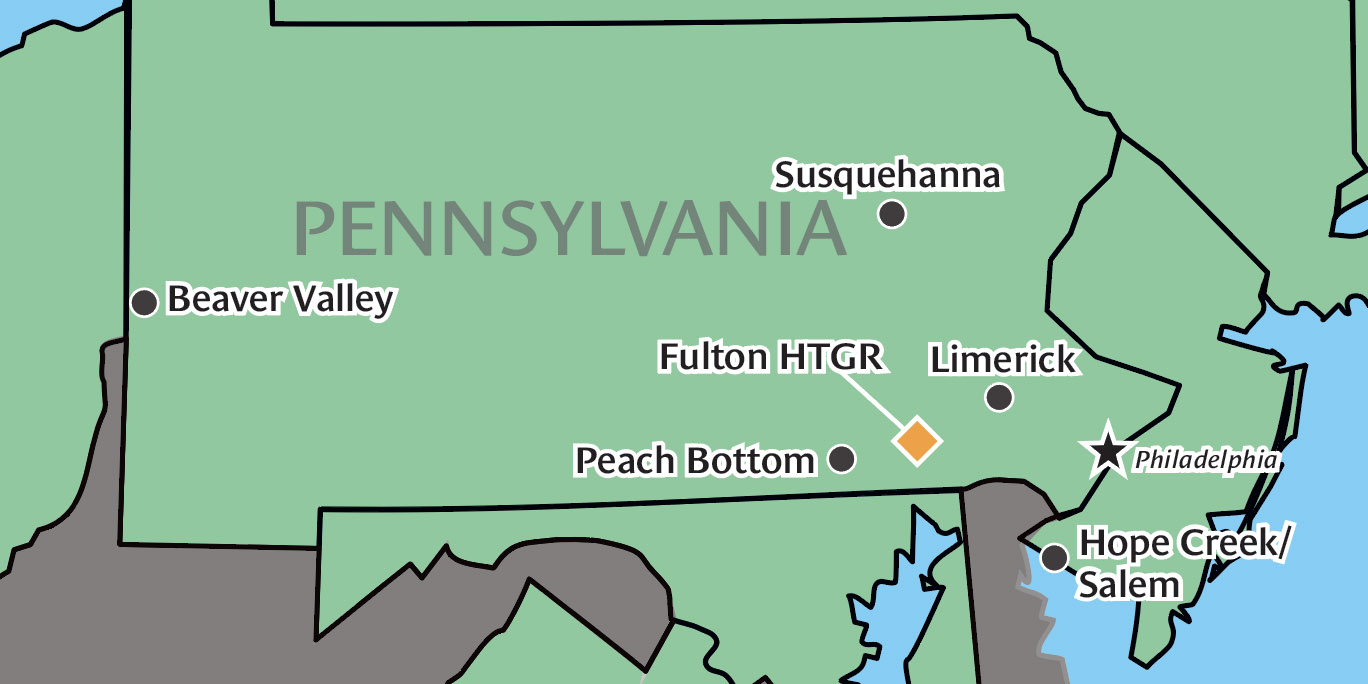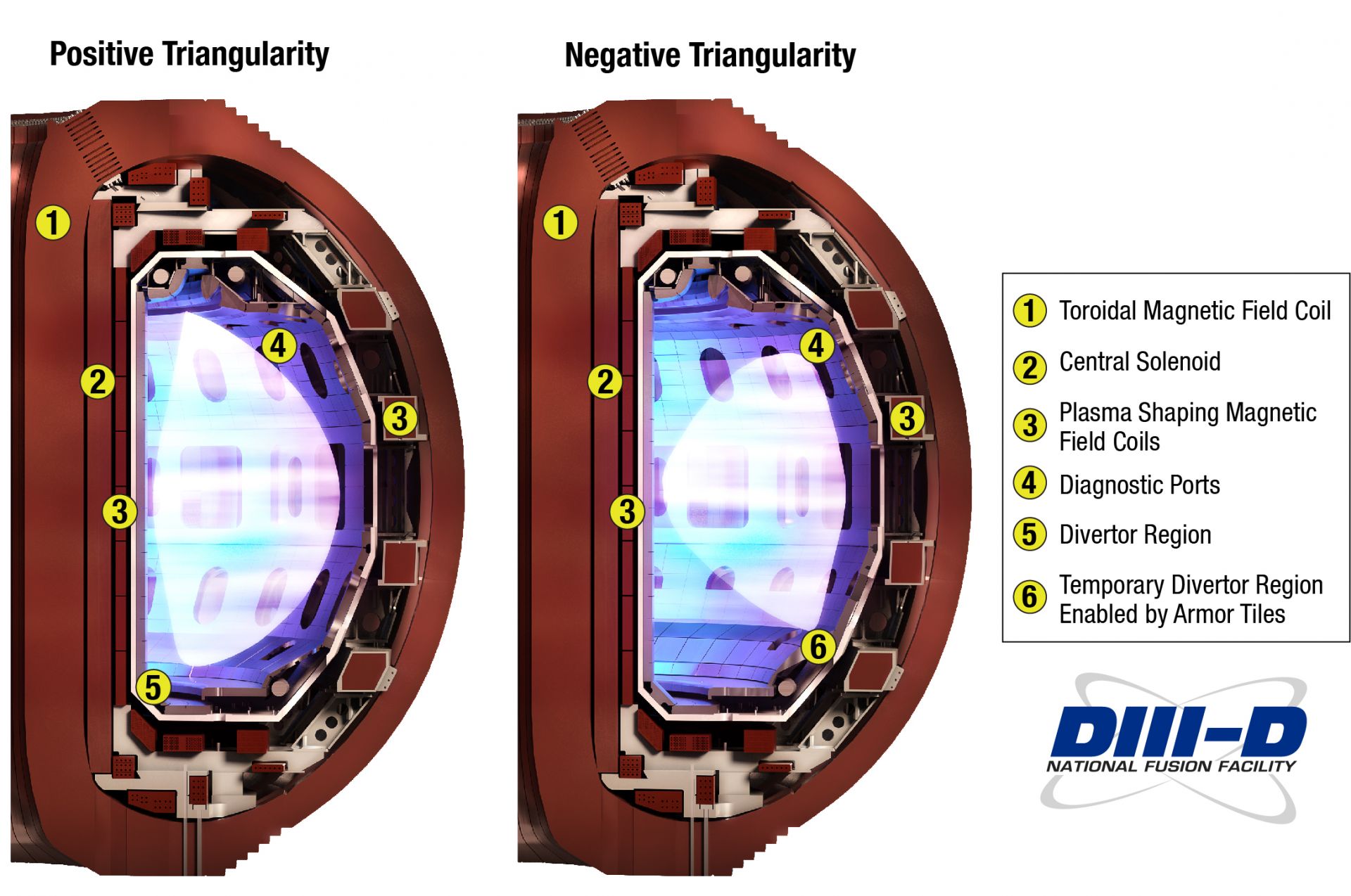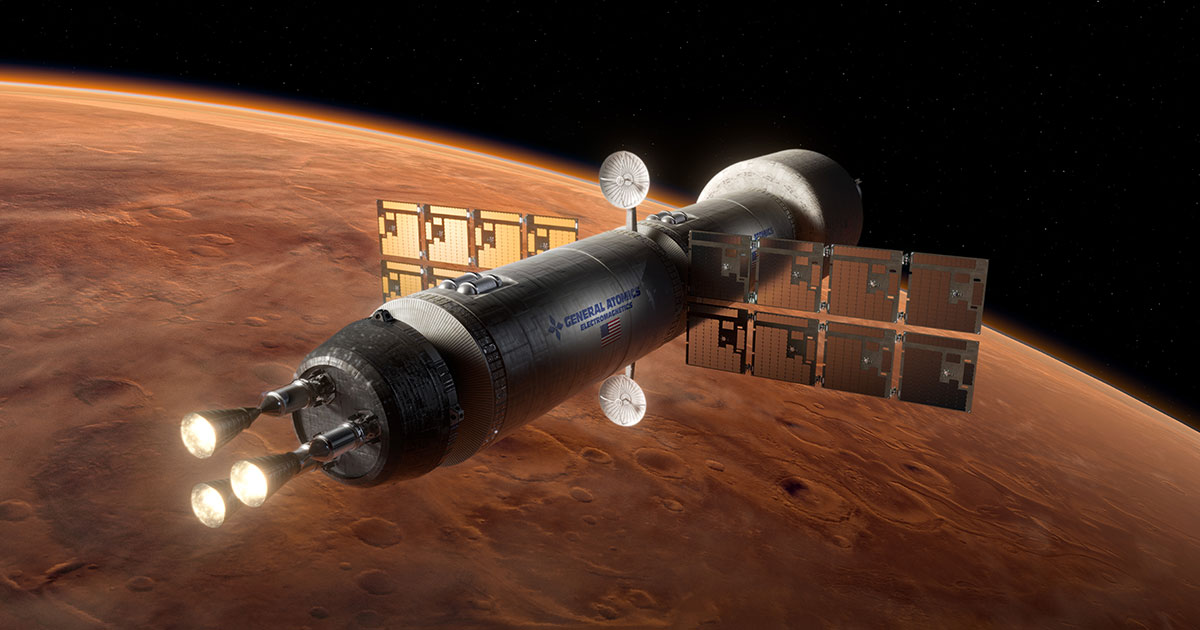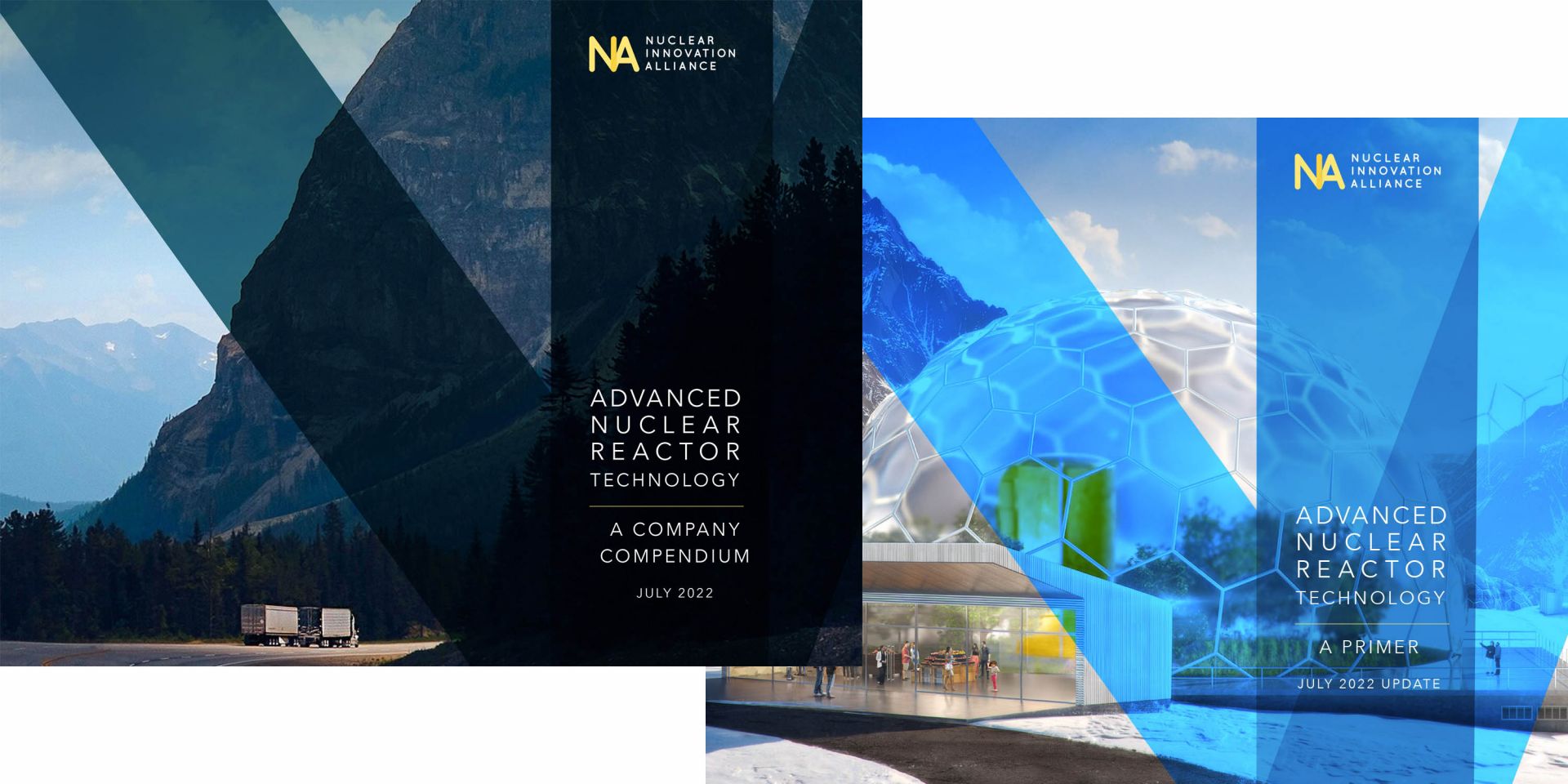The once-proposed location of the Fulton HTGR, in relation to modern-day operating nuclear power plants.
Fulton Station was to be a two-unit high-temperature gas-cooled reactor that was originally planned to start commercial operation in 1981 for Unit 1 and in 1983 for Unit 2. Each reactor was to provide 1,160 MWe of power. The nuclear steam supply system (NSSS) and fuel were to be developed by General Atomics (GA), and engineering firm Stone & Webster was charged with handling the construction. The Philadelphia Electric Company (PECO) had big plans for Fulton Station, but ultimately, the plant was never built.
A side-by-side comparison of a standard plasma configuration (at left) and the plasma created during the negative triangularity campaign at DIII-D, which was made possible by the installation of a temporary divertor region. (Image: General Atomics)
The DIII-D National Fusion Facility in San Diego, Calif., has completed a monthlong research campaign using a negative triangularity plasma configuration inside its fusion tokamak and produced initial data that “appear very encouraging,” according to an April 24 news release from General Atomics (GA), which operates the Office of Science user facility on behalf of the Department of Energy. Full experimental results on “the highest-powered negative triangularity experiments in the history of the U.S. fusion research program” are expected this summer, according to GA.






